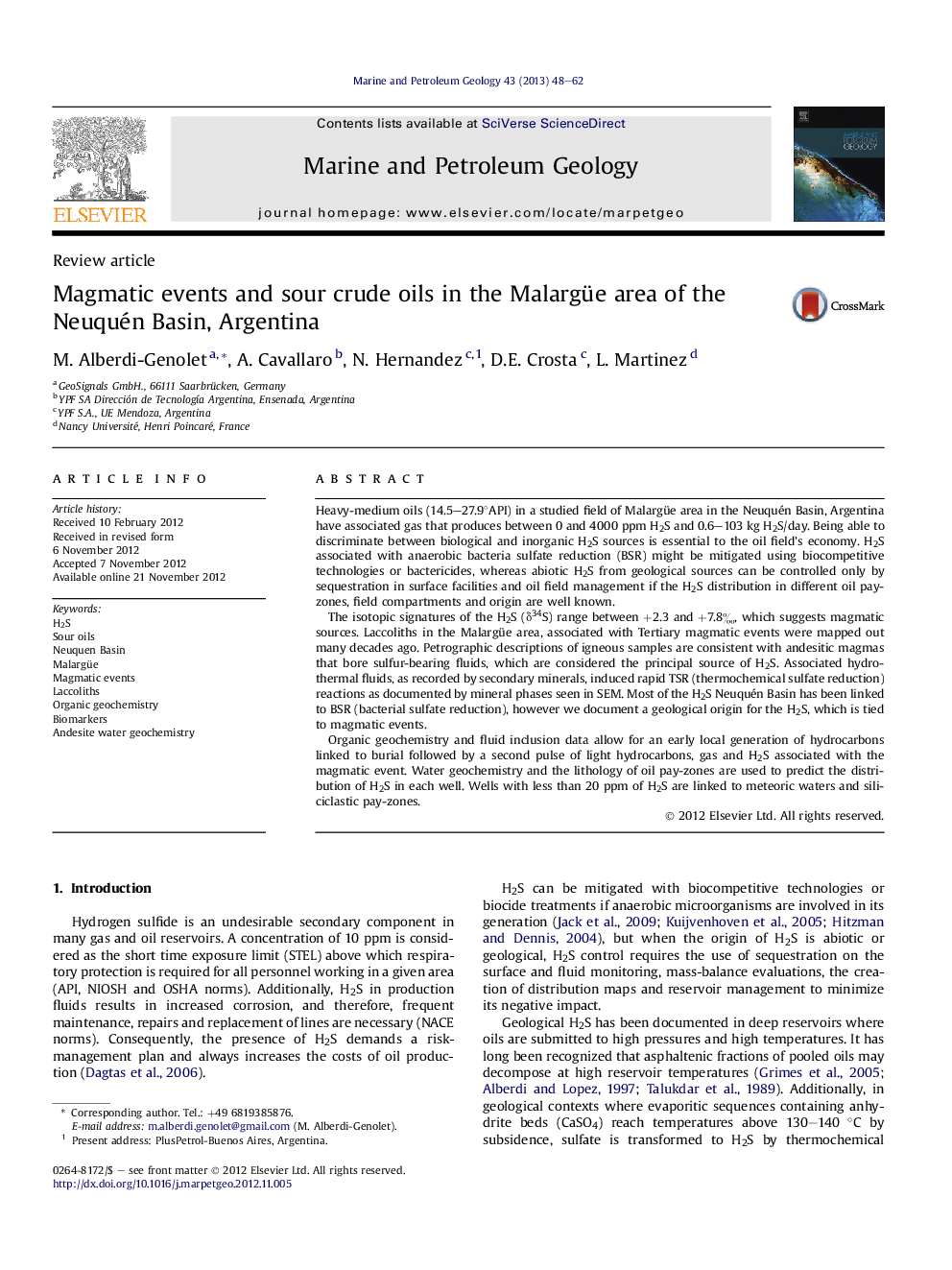| کد مقاله | کد نشریه | سال انتشار | مقاله انگلیسی | نسخه تمام متن |
|---|---|---|---|---|
| 6435513 | 1637181 | 2013 | 15 صفحه PDF | دانلود رایگان |

Heavy-medium oils (14.5-27.9°API) in a studied field of Malargüe area in the Neuquén Basin, Argentina have associated gas that produces between 0 and 4000 ppm H2S and 0.6-103 kg H2S/day. Being able to discriminate between biological and inorganic H2S sources is essential to the oil field's economy. H2S associated with anaerobic bacteria sulfate reduction (BSR) might be mitigated using biocompetitive technologies or bactericides, whereas abiotic H2S from geological sources can be controlled only by sequestration in surface facilities and oil field management if the H2S distribution in different oil pay-zones, field compartments and origin are well known.The isotopic signatures of the H2S (δ34S) range between +2.3 and +7.8â°, which suggests magmatic sources. Laccoliths in the Malargüe area, associated with Tertiary magmatic events were mapped out many decades ago. Petrographic descriptions of igneous samples are consistent with andesitic magmas that bore sulfur-bearing fluids, which are considered the principal source of H2S. Associated hydrothermal fluids, as recorded by secondary minerals, induced rapid TSR (thermochemical sulfate reduction) reactions as documented by mineral phases seen in SEM. Most of the H2S Neuquén Basin has been linked to BSR (bacterial sulfate reduction), however we document a geological origin for the H2S, which is tied to magmatic events.Organic geochemistry and fluid inclusion data allow for an early local generation of hydrocarbons linked to burial followed by a second pulse of light hydrocarbons, gas and H2S associated with the magmatic event. Water geochemistry and the lithology of oil pay-zones are used to predict the distribution of H2S in each well. Wells with less than 20 ppm of H2S are linked to meteoric waters and siliciclastic pay-zones.
⺠Heavy-medium oils in a studied field of Malargüe area in the Neuquén Basin, Argentina have associated gas that produces between 0-4000 ppm H2S. ⺠The isotopic signatures of the produced H2S (δ34S) range between +2,3 and +7,8â°, which suggests magmatic sources. ⺠Petrographic descriptions of igneous samples are consistent with andesitic magmas that bore sulfur-bearing fluids, which are considered the principal source of H2S. ⺠Water geochemistry and the lithology of oil pay-zones are used to predict the distribution of H2S in each well.
Journal: Marine and Petroleum Geology - Volume 43, May 2013, Pages 48-62